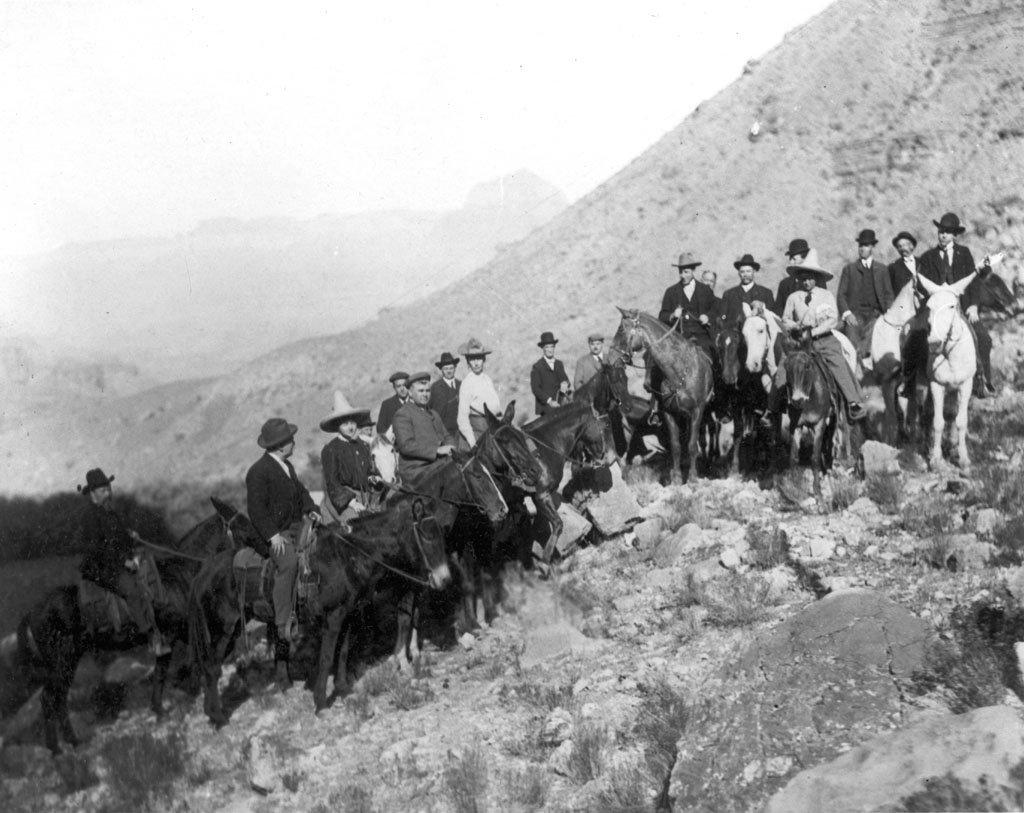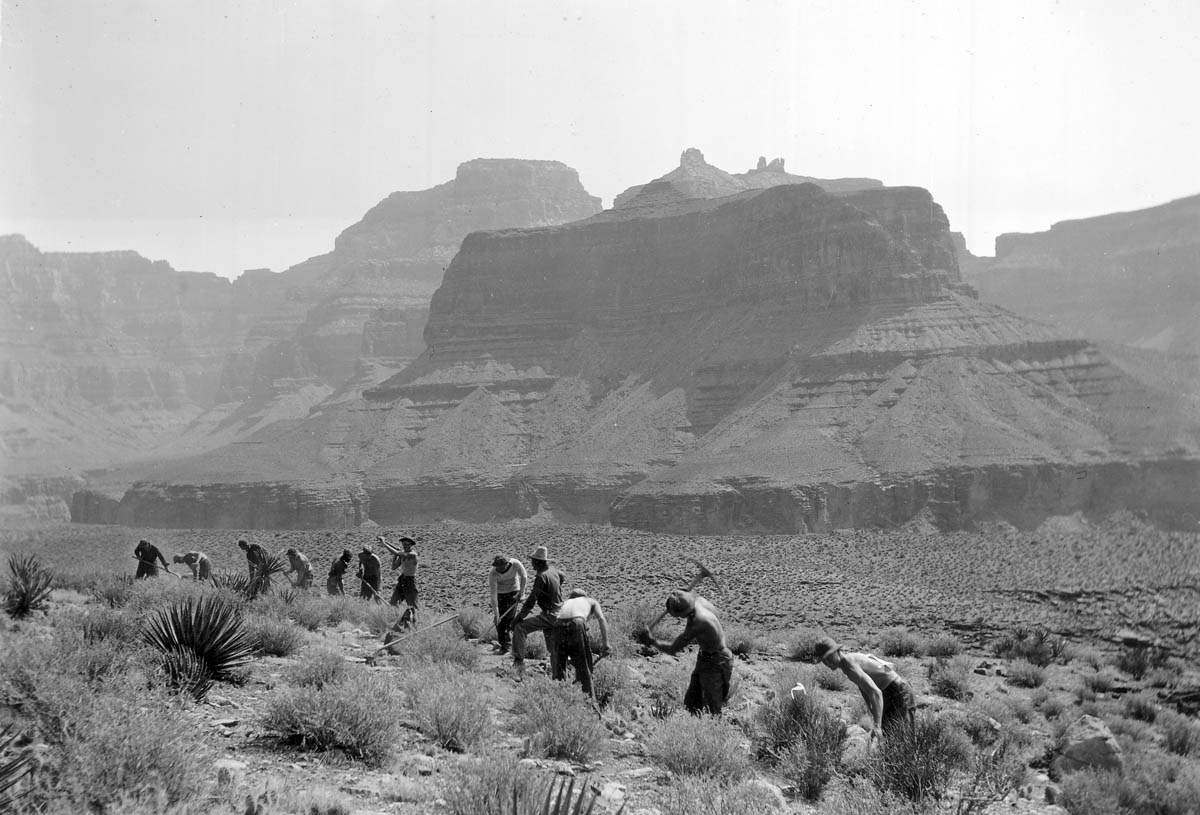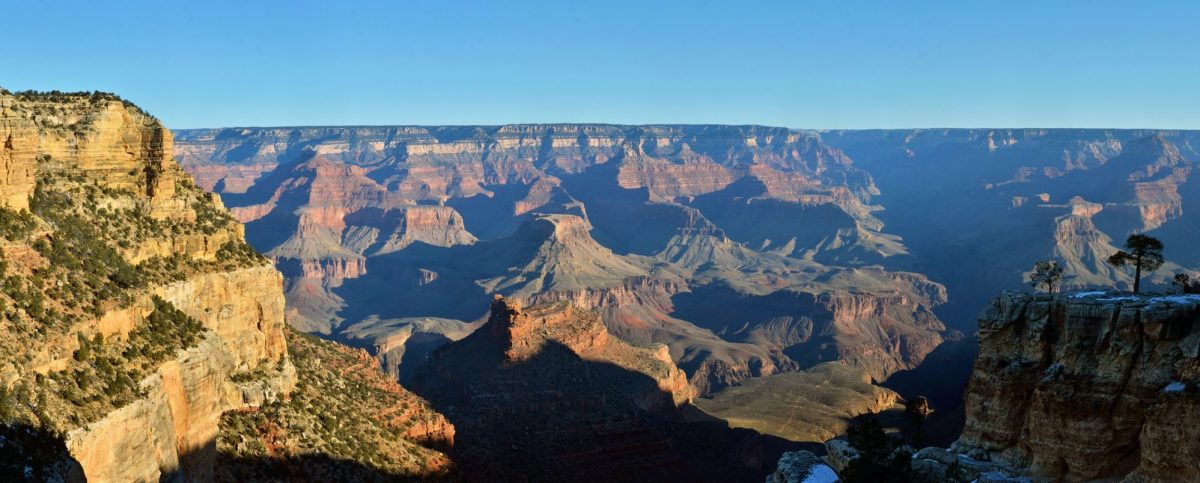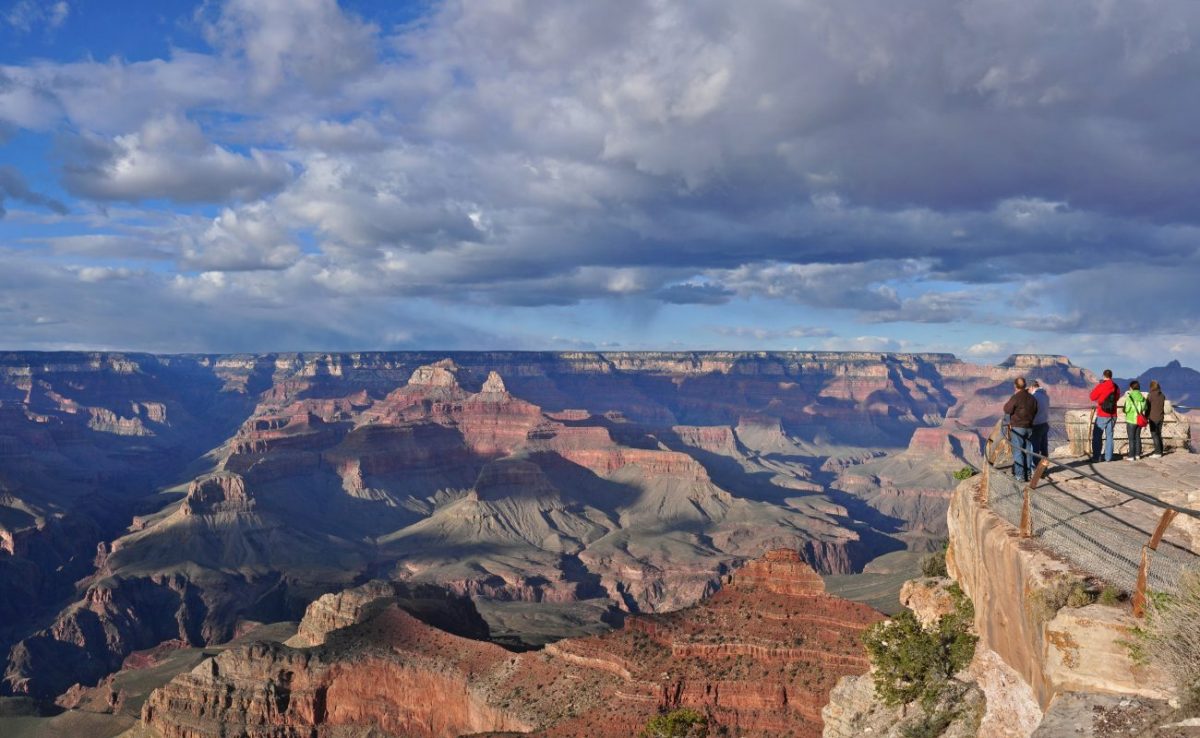In August of 1899, well-known lecturer, photographer and journalist George Wharton James traveled with an Indian guide through what is now Grand Canyon National Park.
“We rode along on the edge of the canyon, on the plateau made by the long-ago denudation of the strata above, and at places came to where, without dismounting from my horse, I could look down into the frightful depths of the canyon to my right, to where the cottonwood trees and flowing water gave life and wondrous enchantment to what would otherwise have been an awful hell of barren rocks,” James wrote of the area known as Beaver Canyon.
His description captures the paradox that is the Grand Canyon — grand in both its unadulterated beauty and utter peril. Its ability to intimidate and inspire awe in all who stand before it is nearly as old as the canyon itself.
And 100 years ago, the nation had sense enough to preserve it.
Previously designated by President Theodore Roosevelt as a National Monument, Grand Canyon National Park was established on Feb. 6, 1919 — 30 years after its magnificence had already been imprinted on Americans’ minds. That year, 44,173 people visited the park. Nearly a century later, in 2018, that number was 6,380,495.
The Grand Canyon continues to be an important part of our cultural, geographic and conservation past, present and future. Here, we celebrate its centennial through a photographic history.

Around the turn of the 19th century, tourists traveled by horseback and muleback on the park’s Bass Trail, named for William W. Bass, one of the most noteworthy early pioneers to explore the rim of the Grand Canyon in the 1880s. His contributions to the canyon include the construction of more than 50 miles of inner canyon trail, most of which still exists today.

The Civilian Conservation Corps constructed the park’s Clear Creek Trail between 1934 and 1935. Originally built as a mule trail, it allowed visitors at Phantom Ranch access to a scenic side of the canyon. At that time, Clear Creek was stocked with trout so that visitors could also fish.

The Colorado River winds through the Grand Canyon for 277 miles. Established about 6 million years ago, the river, along with erosion and active tectonics, continue to shape the canyon today. Every year, thousands of people raft the Colorado’s rapids.

One of the largest hoofed mammals in Grand Canyon National Park, the desert bighorn sheep prefer the rocky slopes and side canyons and roam the entire depth of the canyon foraging for plants.
The Grand Canyon is home to 373 species of animals: 91 mammals, 18 species of fish (five that are native), 58 species of reptiles and amphibians and 8,480 species of invertebrates. Furthermore, seven endangered species including the California condor and three threatened species, like the desert tortoise, call the canyon home.

Grand Canyon National Park encompasses more than 1 million acres and 1,904 square miles. The canyon itself is 277 miles long and up to 18 miles wide, with an average depth of 1 mile. While it may not be the world’s deepest or widest canyon, the Grand Canyon is a site to behold — and thanks to its status as a national park, will hopefully continue to be protected for many more years to come.





